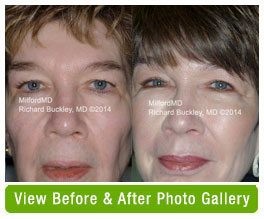Schedule a Consultation 570-296-4000
There have been many recent improvements in fat transplantation techniques, providing for a more accurate and longer lasting result. Your own fat can be easily removed from areas where you do not want it, using only local anesthetic and then precisely placed in areas that need fat (volume) replacement. Many body areas may benefit from fat replacement, especially the aging face.
During facial microliposuction we use very small tubes (microcannulas), to carefully rebuild drooping areas of the face. Rebalancing fat can raise the brow and cheeks as well as restore youthfulness to the eyelids, lips, chin and jaw line. We often combine microliposuction with our fat transplantations, such as removing jowl fat. Most fat that is carefully transplanted survives as living tissue. Some cells do not survive the transplant procedure and therefore a series of small procedures is recommended in order to optimize the outcome.
What is fat transfer?
Fat Transfer, also known as fat rebalancing is when fat is removed from one area of the body and is then precisely placed in areas that need rebuilding, rebalancing and volume replacement. Many body areas may benefit from fat replacement, including hands and the aging or drooping face in order to restore the volume that gives the youthful glow that all of us lose as we age. There are some individuals that have a naturally gaunt or thin face, with little definition, and fat transfer can greatly improve the contours and balance of the face in these patients. While this youthful, healthy glow can also be restored with injectable fillers, there are advantages of using your own fat. Some of the benefits are that it is your own tissue, which eliminates the chance of an allergic reaction and that it lasts for many years as opposed to fillers which typically last only up to one year.
Can any doctor perform a fat transfer?
Dr. Richard Buckley has been personally trained by the experts in this revolutionary technique. It helps to maximize the survival of fat that is transferred and can combine fat transfer with other surgical procedures to give you the best total facial rejuvenation, and one that is more natural appealing than ever before. Dr. Richard Buckley is also an artist and has been all around the world which adds to his palette of understanding the shape and beauty from different countries. This, in conjunction with his expert skill makes him the best choice, for here at MilfordMD Surgery & Laser Center Medicine Meets Artistry.
Is fat transfer right for me?
If you are looking to gain or restore the healthy glow of youth and to bring back a youthful shape to your face then fat transfer may be right for you. Dr. Richard Buckley is happy to meet with you for a consultation to answer your questions, give you his recommendations in order to help you get your desired result and help you decide if fat transfer can address your needs.
What anesthesia is used for fat transfer?
Fat transfer is able to be performed with only local anesthesia. The local anesthesia is used on both the donor and recipient sites.
How is fat transfer performed?
First, Dr. Richard Buckley will very slowly numbs the donor area with tumescent anesthesia. He then “hand rolls” it, which is somewhat similar to liposuction, but with much more attention to keeping the fat cells alive. The abdomen, hips, and thighs are common donor sites, but you and Dr. Richard together will decide the best donor site. The fat is then prepared and carefully placed back into the recipient sites in the face to replace the fat that has naturally diminished with age and enhance the soft tissue of the face.
Is fat transfer very painful?
Patients may experience some minor discomfort which tends to fade quickly. Some patients use an oral over the counter pain medication that helps the discomfort to go away.
What is the recovery from fat transfer like?
Some patients have minor discomfort after the fat transfer procedure, though this tends to resolve quickly. The side effects to fat transfer to the face include swelling, bruising and numbness. Recovery time does vary by individual, but most swelling and bruising will disappear in about 2-3 weeks. Generally, the recovery of fat transfer to the face is relatively minor and patients report that the results are absolutely worth it.
How long do the results of fat transfer/fat rebalancing last?
While the results of fat transfer can vary from patient to patient, most patients see a truly remarkable effect for many years to come. Though the results are long-lasting, the need to remember that the clock does not stop as normal aging and gravity continue to work against us.
What if I want more fat transfer later?
The approach we take at MilfordMD Surgery & Laser Center is one of complete patient satisfaction. Dr. Buckley is very careful not to make you look overinflated, so the need for a “top off” session is a wonderful idea.



